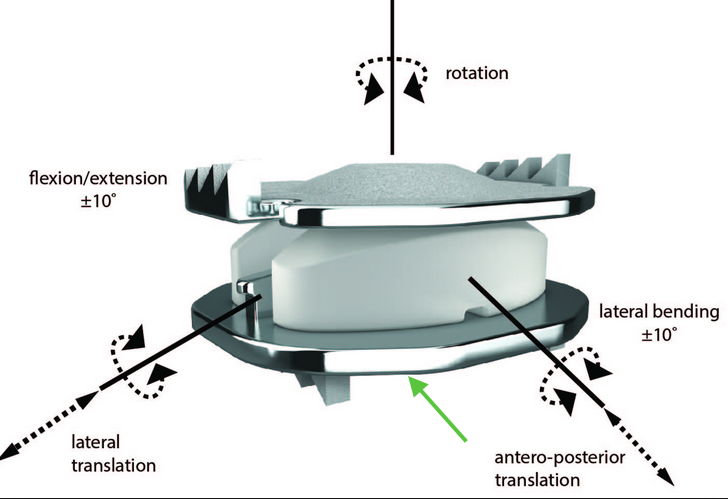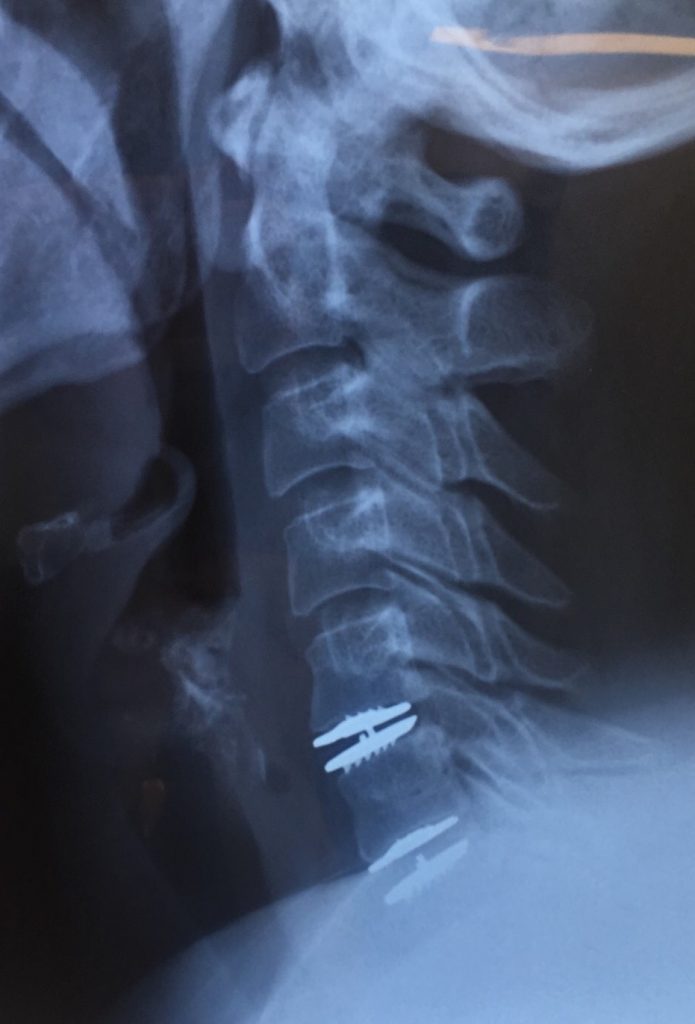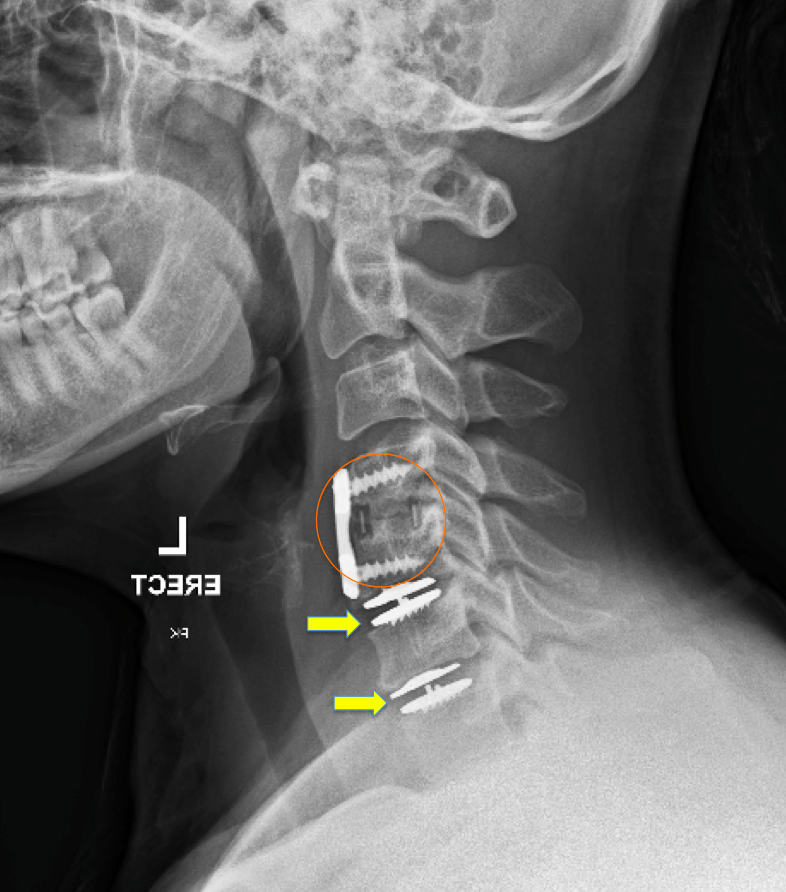Dual-level mobile cervical artificial discs – Where spinal art, biomedical engineering and human anatomy all meet
This is the Mobi-C artificial cervical disc (LDR/Device Technologies). I was recently informed that as of today, I’ve inserted more of these in dual-level anterior cervical surgeries that any other neurosurgeon in Australia. The results in my patients have been excellent overall.
This is what they look like on the immediate post-operative x-ray:
In degenerate, mechanically stable cervical disc spaces, I prefer to use mobile artificial discs in preference to any other device that leads to rigid fusion. Why? Because cervical disc spaces need normal mobility to function properly; this helps to structurally and functionally preserve them AND their adjacent levels. Medical science supports this veiwpoint (see some key journal articles, below). Of course sometimes rigid fusion is necessary in the cervical spine, particularly if the disc space is severely degenerate and has a mechanically unstable slip/spondylolisthesis, or if the surgeon needs to re-shape/restore the cervical spine towards a more natural “lordotic” curvature using custom ‘wedged’ cages.
Here’s a patient who had a successful rigid fusion at C4/5 by another surgeon (relatively bulky apparatus comprised of screws, plate and a fusion cage; red circle). She needed further work at her C5/6 and C6/7 “adjacent segment” levels (yellow arrows), which I undertook using sleek Mobi-C mobile artificial discs.
The medical science supporting the use of artificial cervical discs is now comprehensive. Here are a few premier peer-reviewed journal articles that, in my opinion, clearly warrant their use whenever safe and feasible to do so. The surgeon’s decision making process/selection criteria should be sound (Click the links below for the PDF):
- Article 1 – Single and dual-level Mobi-C five-year follow up data, randomised clinical trial – Journal of Neurosurgery (2016)
- Article 2 – Cost utility analysis of dual-level cervical artificial disc surgery versus standard fusion (ACDF), five-year follow up data – Neurosurgery (2016)
Techniques and technologies have come a long way for spinal reconstruction, and when used judiciously, should result in nice outcomes. Please take a moment to look through the other Blogs on this Website, and our patients’ Google Reviews.
< Back to blog


